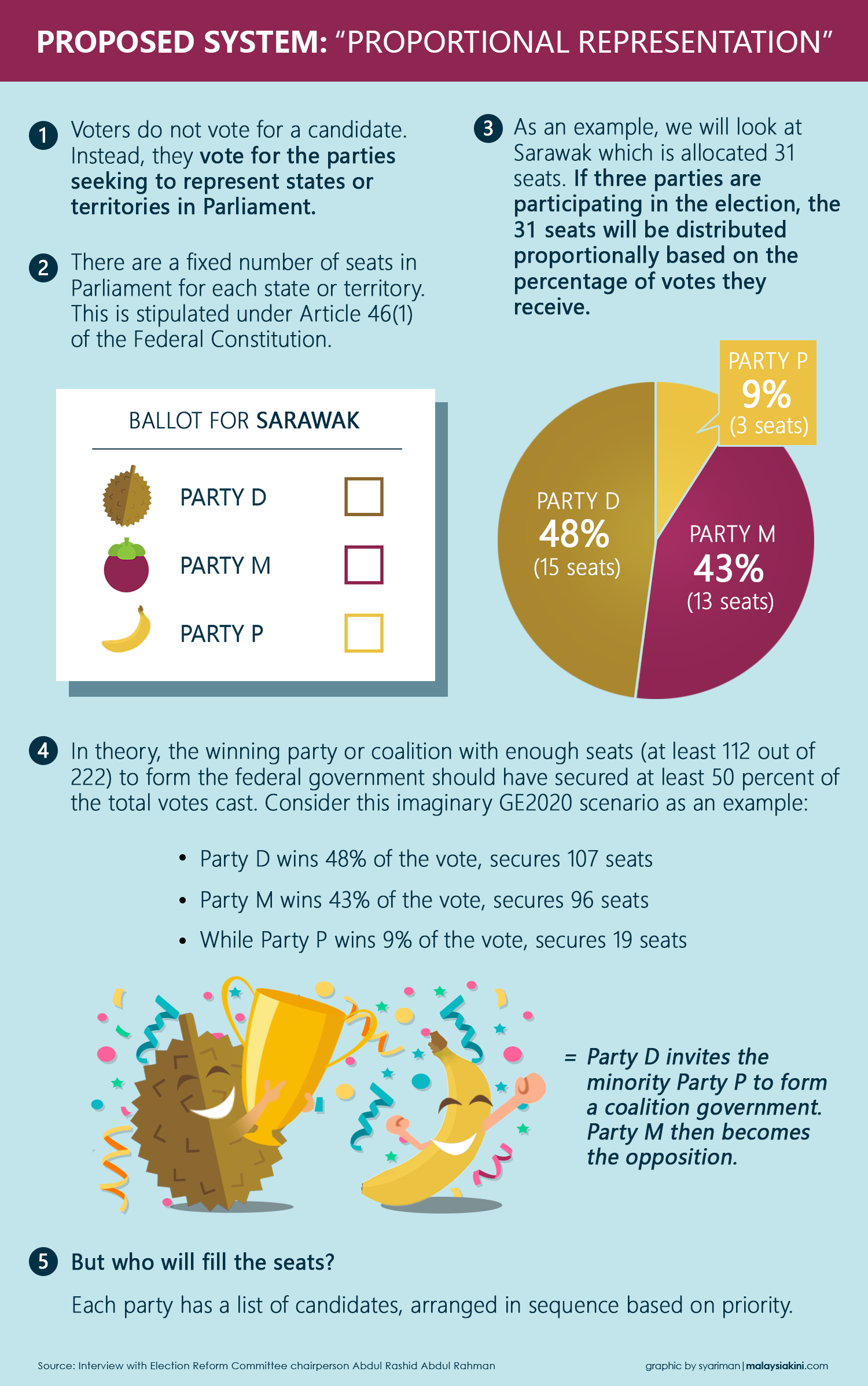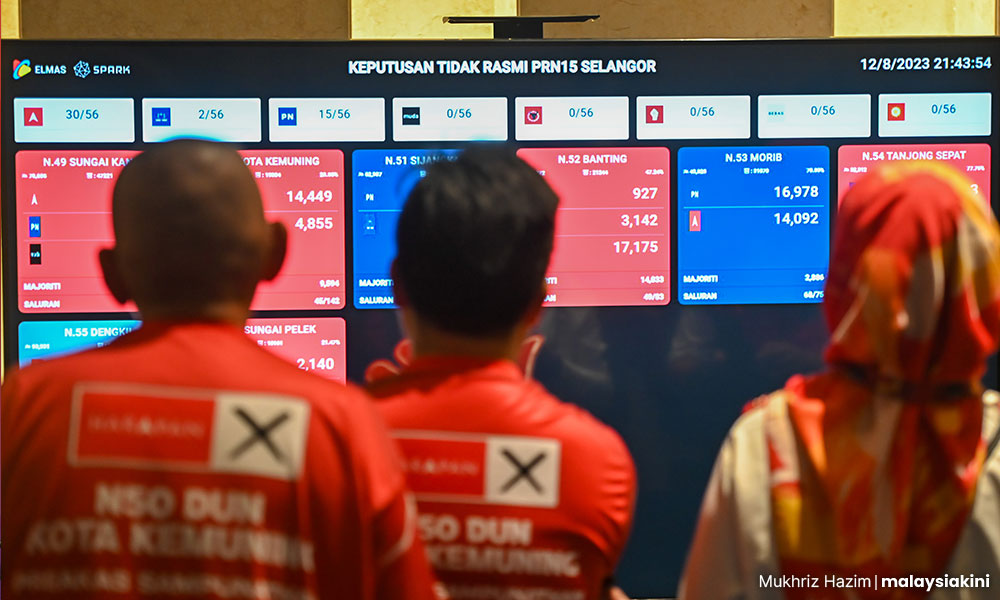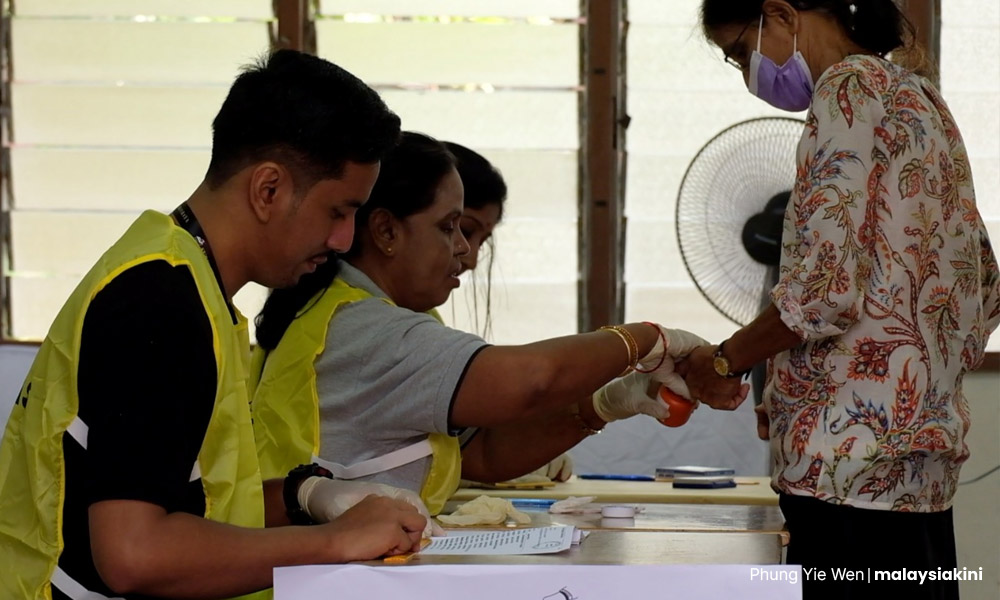The outcome of the six-state elections highlights the need for Malaysia to reform its electoral system.
This is as the first-past-the-post (FPTP) election system continues to result in voters not having a fair representative in the legislative branch, even in a straight-fight situation.
If a proportional representation (PR) system proposed by the Pakatan Harapan-era Electoral Reform Committee (ERC) were used the outcome in most states would be pretty different.
Simulations indicate that the ruling Pakatan Harapan-BN coalition would have more seats in Kedah, Kelantan and Terengganu under a PR system and vice-versa for PN in Penang and Negeri Sembilan.
In Kedah, under the FPTP system, BN was wiped out while Harapan only picked up three seats, whereas PN dominated and bagged 33 seats.
However, while the elections were mostly a straight fight, the current electoral system, in which districts are divided into seats, suffers from voters not being equally distributed between constituencies.

Different outcome
In Kedah, the smallest seat had 25,000 voters, while the biggest state constituency had 82,000 voters.
Under a PR system, in which seats in the legislature would be divided based on vote share, the outcome in Kedah will be considerably different.
With 30.11 percent of votes in Kedah, the Harapan-BN pact would have 11 seats under a PR system, while PN would have 25 seats.

Meanwhile, in Kelantan, with 30.54 percent of votes, the Madani coalition would have 14 seats instead of just two, while PN would have 31 seats.
In Terengganu, instead of a complete wipeout, Harapan and BN would have 10 seats, whereas PN would have 22.
Both ways
A PR system, however, does work both ways, meaning that PN would also have more seats in Penang and Negeri Sembilan.
In Penang, where PN bagged 32.65 percent of votes, the coalition would get 13 seats instead of 11, while Harapan and BN would have 27 seats.
In Negeri Sembilan, PN's 37.65 percent vote share would give it 14 seats instead of five, while Harapan-BN would have 22 seats, meaning the Madani coalition would not get a two-thirds majority here.

The PR system would result in the same outcome in Selangor, with Harapan and BN winning 34 seats (60.54 percent vote share), while PN wins 22 seats (37.8 percent vote share).
For the simulations, Harapan and BN votes were combined as they had contested as a team and neither of the two coalitions contested in all seats.
A five percent threshold was also applied, similar to the threshold set in Germany.
Based on the current data, Muda and PSM would not win any seats, as their highest combined vote share is 1.27 percent in Selangor.

No limitation
However, if it had been a PR system election, Muda and PSM would not have been limited by how many seats they contested, opening up the possibility that they could have received more votes.
Given Malaysia's current political trajectory, a shift from the FPTP system to a PR would benefit all the major political parties by limiting the possibility of total wipeouts and ensuring their supporters are adequately represented in the legislative branch.
A hybrid system practised in Germany can also be considered, in which voters vote for candidates in seats and for parties or coalitions at a state level.
The ERC report proposing the move to a PR electoral system was completed in 2020 when PN was in power and had been submitted to then-premier Muhyiddin Yassin.
However, the report has been stuck in limbo ever since. - Mkini




No comments:
Post a Comment
Note: Only a member of this blog may post a comment.